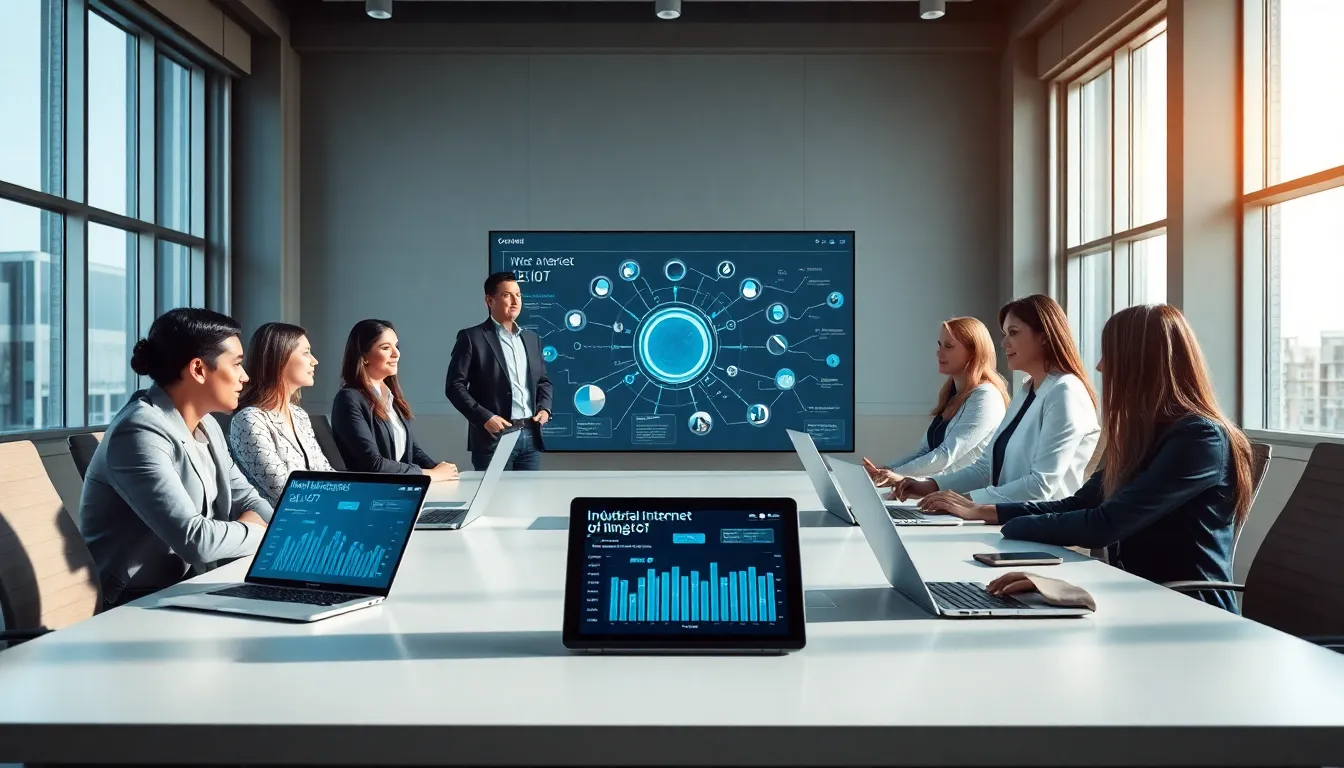In a world where nearly everything can be connected to the internet, two terms frequently pop up: the Internet of Things (IoT) and the Industrial Internet of Things (IIoT). While they might sound similar, they’re more like distant cousins at a family reunion, related but definitely not identical. Think of IoT as the party-planner and IIoT as the no-nonsense manager ensuring everything runs smoothly behind the scenes. Let’s immerse and untangle these technological threads, shall we?
Table of Contents
ToggleUnderstanding The Basics

What Is The Internet Of Things (IoT)?
The Internet of Things, or IoT, refers to the expansive network of physical devices that connect to the internet, enabling data exchange. This phenomenon includes everything from smart coffee makers brewing your morning cup to wearable fitness trackers monitoring your heart rate. In essence, if it’s a device that can collect and share data, it falls under this expansive umbrella. With IoT, the world becomes more interconnected, enhancing everyday tasks and improving efficiencies.
What Is The Industrial Internet Of Things (IIoT)?
On the other hand, the Industrial Internet of Things, known as IIoT, is a subset of IoT specifically designed for industrial use. IIoT connects machinery, sensors, and operators, enabling real-time data analytics and feedback for optimizing production processes. Imagine it as the command center for manufacturing plants, where performance metrics are closely monitored to ensure that machines run at peak efficiency. IIoT presents a paradigm shift in how industries operate, bringing automation and enhanced intelligence to the forefront.
Key Differences Between IoT and IIoT
Scope and Applications
When it comes to scope, IoT encompasses a broader range of devices, varying from household items to smart cities. Applications span across personal lives, healthcare solutions, and smart homes. IIoT, but, zooms in on specific applications within industries like manufacturing, supply chain management, and energy efficiency. Think of IIoT as the specialized doctor treating industry-based ailments while IoT is the general practitioner seeing everyone else.
Data Management and Analytics
Data management demonstrates another pivotal difference. IoT devices produce massive amounts of data, which often requires cloud storage and analysis. In contrast, IIoT focuses on real-time data processing and analytics to make immediate operational decisions. The ability to process data swiftly can significantly enhance productivity in factories, where even seconds can mean cost savings.
Security Considerations
Security is a critical concern for both IoT and IIoT, but the stakes are considerably higher for IIoT. IoT devices might be vulnerable to personal data breaches, while IIoT systems can affect entire manufacturing lines and infrastructure. IIoT needs robust security protocols to prevent threats that could lead to catastrophic failures in industrial settings.
Benefits of Each Approach
Understanding the unique benefits of IoT and IIoT can illuminate why both are crucial in today’s tech-driven world.
For IoT, benefits include improved convenience and day-to-day automation that enhances personal productivity. Smart home devices can manage energy efficiently and stream data that helps users make informed choices. The result? An unprecedented level of comfort and control.
Conversely, IIoT brings significant operational advantages to industries. It reduces downtime, improves supply chain efficiencies, and enables predictive maintenance of machinery. Facilities can anticipate equipment failures and rectify issues before they escalate, so optimizing overall performance and reducing costs.
Challenges Faced by IoT and IIoT
Even though their many advantages, both IoT and IIoT encounter several challenges. For IoT, data privacy and integration hurdles are frequent dilemmas. With countless devices communicating simultaneously, ensuring data integrity and privacy can become a complex try.
On the IIoT front, challenges include integration with legacy systems and the significant upfront investment for advanced technology. Organizations must navigate their way through the transition from traditional methods to more modern, interconnected frameworks. Also, specialized training for staff to manage these systems presents another roadblock.
Future Trends in IoT and IIoT
As technology evolves, so too will the realms of IoT and IIoT. Emerging trends indicate a greater emphasis on artificial intelligence and machine learning within these systems. AI can provide predictive analytics and enhanced decision-making capabilities, moving industries toward a future where machines are not just interconnected but also smart.
Also, the push for sustainability will encourage the development of eco-friendly IoT devices and IIoT systems. Manufacturers will strive for waste reduction and energy efficiency, using intelligent analytics to minimize their environmental impact. The future landscape promises synergies between IoT, IIoT, and green technology, paving the way for a more sustainable digital age.



